The hot and dry desert can be a very harsh place to most people. In a year, a desert can receive about 250 milliliters of rainfall. This is the least rainfall that can be experienced in any climatic condition on the planet.
The area, thus by default, contains very little precipitation or water sources. Temperatures in the desert are also very extreme and can be unbearable for any human being. During the day, temperatures can rise to about 50 degrees Celsius. These temperatures are too hot and can cause people to sweat hard, draining water from the body. During the night, temperatures also go to about -4 degrees Celsius.
The high temperatures also cause high evaporation rates in the area, making it dry during most of the year. Desert vegetation is also scarce and highly adapted to extreme conditions, high speeds winds acting as a sculptor of the region are also a normal occurrence.
Locating Water in The Desert
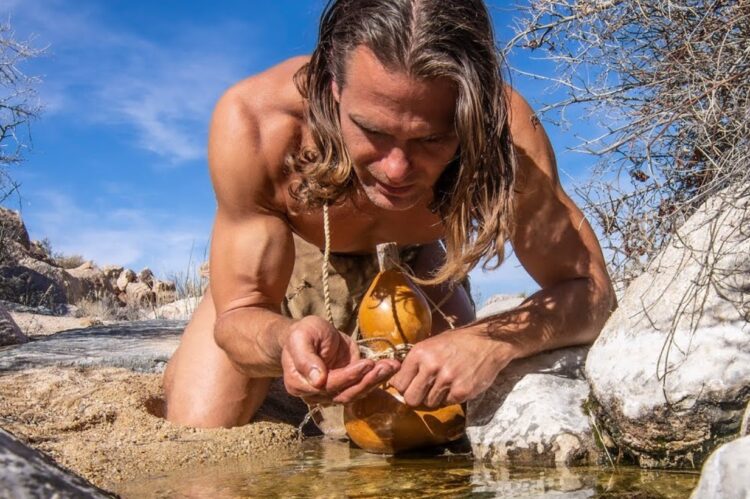
Unless you are one of the nomadic indigenous tribesmen of the community, getting lost in the desert can be very challenging. With all of these threatening conditions, a lack of basic survival skills may be detrimental or fatal in a desert. Before taking a trip to the desert, proper planning should be done to ensure safety. Apart from planning an itinerary and carrying an extra fuel tank, plenty of water is very crucial.
Humans can only go for three days without water. In case you get stranded in the desert and unable to contact help, knowing how to locate water sources in the desert can save your life. The article will share with you how to find water in the hot and dry desert.
Check Low terrain and Rocky Areas
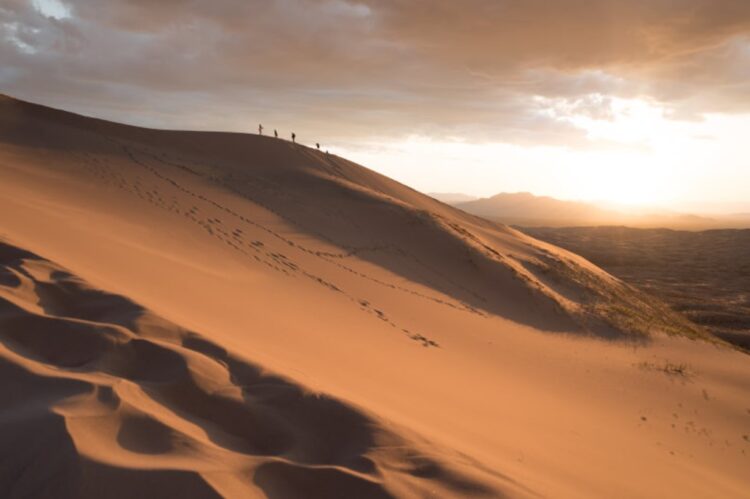
Water always flows in the lowest ground or terrain. When trying to find water, climb to high ground and try to spot any nearby water sources. The most common place to look at is areas of low terrain with split rocks since water has a higher chance of being in such a place. Water collects in pools in sloping places. It may also form small puddles where rocks or sandstones have some curved surfaces that can hold water. Canyons and valleys may also hold water as well as small hidden underground rivers. When at high ground, a pool of water may appear like a flat surface reflecting light.
Look For Signs of Life
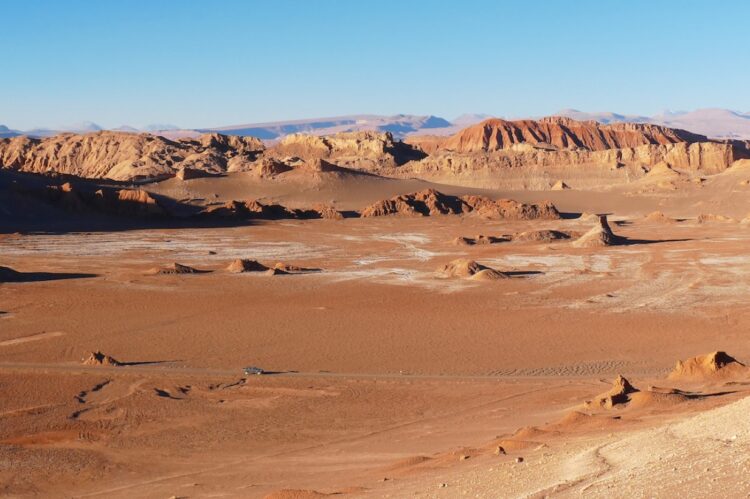
Signs of life can be a good indication that a water source might be near. Check for signs of life near you since they indicate the presence of water.
Try to spot birds in the air or ground. Listening can also help you hear and spot birds that may be out of sight. Just following the birds may lead you to a water source. Flying insects like mosquitoes and houseflies can also be a good indicator of water nearby. Since animal life requires water to survive, any first sign of wild animals, especially herds, is also a good indicator. Not only are the desert plants a good indicator of water, but they can also be a good source. The cacti plant can be crushed to access water in the plants. Other fruits, vegetables, and roots may also get crushed to provide water in times of dire need. Ants can also help trace water that has been trapped between tree barks and stems.
You can also collect water using your clothes. During the night, the temperatures in the deserts are cold enough to cause some condensation of the moisture in the air. Hanging a cloth out in the open can help you trap some dew. The formed dew on the cloth can now be wrung in the mouth to hydrate your body. It also requires you to access the water very early. Otherwise, the water has a high chance of evaporating after the sun rises.
When it rains, you can use containers and cups to collect the water. Building a tarp can also allow trapping more water that can be drunk and stored in case of another water shortage.
Spot Dry River Beds
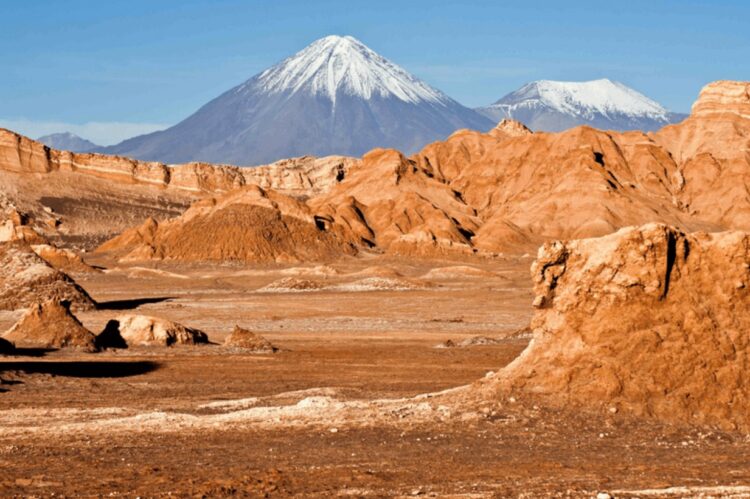
Trying to spot dry riverbeds can also be a good idea. Any signs of clay soil or damp soil may indicate some water beneath the ground. Trying to locate where the river was moving slowest, especially areas of sharp bends, will help you predict better. Digging the suspected area a few feet down can expose some water that you can take. You may have to wait overnight for some cases before water collects, but once there is enough, use a cloth to soak the water and wring it out to your mouth.
Use a Polythene Bag to Trap Water if You Find Yourself with One
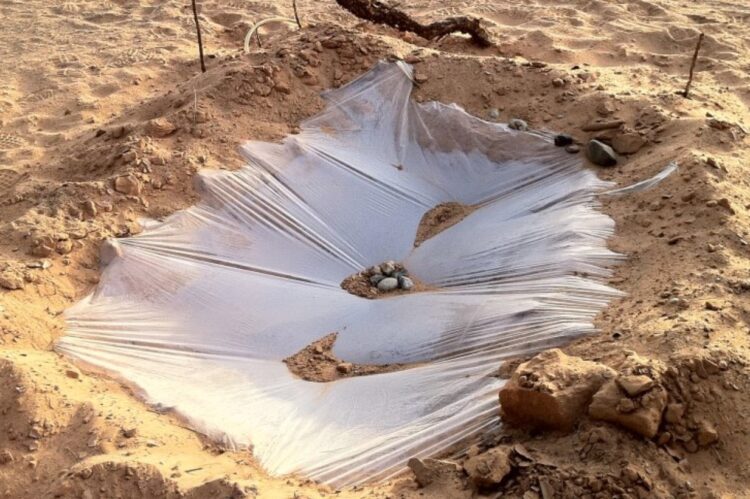
Using polythene bags to wrap around some trees can also help you trap some water from the plant’s respiration process. This may not help you get a substantial amount of water unless you have some extra polythene bags. The water can help sustain you for a while but cannot be that reliable, thus trying to look for other options.
Finding water is not as intense as say drill core logging about which you can find out at https://mountsopris.com/.
It could still be difficult if you are unfamiliar with the desert or surviving without water to begin with. When lost in the desert, it is always a good idea to know some of these tips and tricks to help you track water.
In most cases, you might find water that may look unfit for consumption. If you are in a position to boil the water, please do so. Filtering and adding some water purification chemicals may help you avoid getting infected with some common water-borne diseases. These diseases might cause you to vomit and experience diarrhea that will aggravate your dehydration, making you more vulnerable.
If you cannot treat the water before taking it, it’s advisable to take the chances of drinking the contaminated water rather than die out of dehydration.
The post How to Find Water in The Desert appeared first on FotoLog.
from FotoLog https://ift.tt/3iO0mtP
via IFTTT


0 Comments